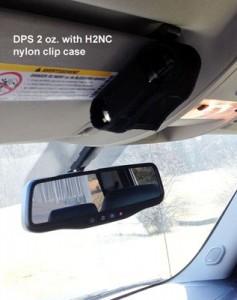Table of Contents
- Understanding Legal Restrictions on Pepper Spray in Vehicles
- State-by-State Variations in Carrying Pepper Spray While Driving
- Best Practices for Storing and Using Pepper Spray in Your Car
- Essential Tips for Complying with Vehicle Pepper Spray Regulations
- Insights and Conclusions
Understanding Legal Restrictions on Pepper Spray in Vehicles
When it comes to carrying pepper spray in your vehicle, understanding the legal framework is essential to ensure compliance and avoid unintended consequences. Laws regarding possession and use can vary significantly by state and even by local jurisdiction, with some areas imposing strict limits on the concentration of the active ingredient or banning pepper spray in vehicles altogether. For instance, certain states require that the spray be easily accessible to the driver without needing to exit the vehicle, while others might mandate a minimum age or prohibit possession by individuals with specific criminal backgrounds.
Key elements to consider include:
- Permitted container size and strength: Many jurisdictions regulate the maximum size and potency of pepper spray allowed in a car.
- Age and licensing requirements: Some locations require users to be a certain age or possess a permit to carry pepper spray legally.
- Intended use and storage rules: Misuse or improper storage (such as locking the spray away in an inaccessible compartment) can lead to violations.
Before placing pepper spray in your vehicle, it’s advisable to research your specific area’s laws or consult legal counsel. This helps safeguard your rights while ensuring your personal safety tool remains effective and lawful when you need it most.
State-by-State Variations in Carrying Pepper Spray While Driving
When it comes to transporting pepper spray in your vehicle, the regulations can vary widely across the United States. Some states adopt a permissive approach, allowing drivers to carry pepper spray with minimal restrictions, while others impose specific requirements regarding its placement and accessibility. For example, in states like Texas and Florida, pepper spray is generally legal for personal protection but must be stored in a manner that doesn’t obstruct safe driving or endanger others if accidentally discharged. Alternatively, states such as California and New York have more stringent laws, sometimes requiring the spray to be kept in the glove compartment or out of immediate reach of the driver.
Understanding the nuances of these laws is crucial for safe and legal possession. Key points to consider include:
- Quantity Limits: Some states cap the size or volume of pepper spray containers allowed in vehicles.
- Accessibility Rules: Regulations may dictate whether the spray can be kept on the driver’s seat, center console, or trunk.
- Age and Licensing: Certain jurisdictions restrict pepper spray possession to individuals above a specific age or require a permit.
- Travel Implications: Carrying pepper spray across state lines demands compliance with the most restrictive law along your route.
Best Practices for Storing and Using Pepper Spray in Your Car
When keeping pepper spray in your vehicle, choose a secure but easily accessible location. Avoid storing it in the glove compartment or under the seat where fumbling might delay your response during an emergency. Instead, consider attaching it to the sun visor or a door pocket within arm’s reach. Always ensure that it is kept away from direct sunlight and extreme temperatures, as intense heat or cold can degrade the formula and reduce its effectiveness. Regularly inspect the canister for any signs of damage or leakage to maintain reliability.
Remember, proper handling and usage are crucial for both safety and legality. Never point or discharge pepper spray unless you are facing a legitimate threat, and familiarize yourself with your state’s laws regarding permissible amounts and spray strength. It’s a good practice to keep a copy of your local regulations in your vehicle for quick reference. Additionally, consider training sessions or tutorials to practice how to deploy pepper spray swiftly and accurately, helping you stay confident and prepared if the need arises.
Essential Tips for Complying with Vehicle Pepper Spray Regulations
To ensure you stay within the boundaries of the law when carrying pepper spray in your vehicle, it’s crucial to familiarize yourself with state and local regulations that can vary significantly. Always check the permissible container size, legal concentration limits, and specific carrier requirements before purchasing or storing pepper spray in your car. Some states may require you to keep the spray in its original packaging or locked in the glove compartment, while others allow it to be carried more freely. Being proactive about these details can help you avoid hefty fines or even criminal charges.
Additionally, consider the following best practices to maintain compliance:
- Verify age restrictions: Most jurisdictions require users to be at least 18 years old.
- Avoid prohibited locations: Certain areas like federal buildings or schools may have stricter rules.
- Keep documentation handy: Carry any necessary permits or proof of purchase to demonstrate legal ownership.
- Use responsibly: Pepper spray is intended solely for self-defense, so misuse can lead to legal consequences.
Insights and Conclusions
In summary, understanding the legal restrictions surrounding pepper spray in vehicles is crucial for responsible and lawful self-defense. Laws vary significantly by state and country, so staying informed ensures you’re prepared without crossing legal boundaries. Always check local regulations before carrying pepper spray in your vehicle, and consider additional safety measures to protect yourself on the road. Staying educated not only keeps you compliant but also empowers you to respond confidently in emergencies. Stay safe out there!Check Our Other Blogs
- StunGun – Your Trusted Source for Stun Guns, Laws, and Self-Defense Tips
- PepperSprayLaws – Your Trusted Resource for Pepper Spray Information
- StunGunLaws – Your Trusted Guide to Stun Gun Legality and Safety




